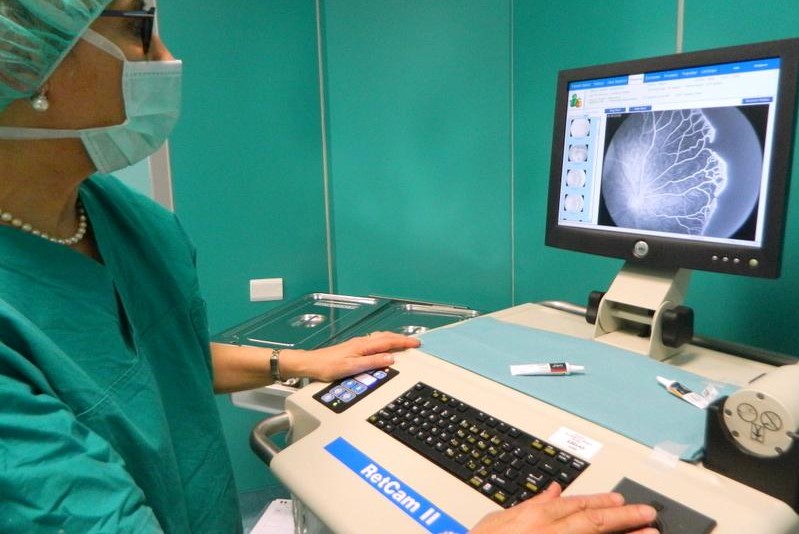
Diabetic retinopathy: prevention and controls to avoid complications
Diabetes can also play tricks on eyesight. It happens in the case of diabetic retinopathy, a complication due to high blood sugar that can cause damage to the retina over time
The condition, if not discovered in time and if left untreated, can lead to low vision and blindness.
Diabetic retinopathy: how does it damage the eye?
It all starts with poor diabetes control. Hyperglycemia (high blood glucose levels) can damage the eye due to its vascular and neurological effects.
On the vascular side, in fact, hyperglycemia induces alterations in the walls of the small retinal vessels, which thus pour liquids and other substances (edema and exudates) into the retina.
The most serious situations occur when the fluid oozes into the macula, the area of the retina responsible for central vision. Macular edema interferes with vision, causing blurry and distorted vision.
Alongside these phenomena, small retinal ischemias may also occur, linked to the tendency of the small vessels to become blocked.
Diagnosis
In the early stages, diabetic retinopathy is usually asymptomatic.
For this reason, the diabetic patient must undergo eye checks at least once a year.
A visit with an accurate examination of the fundus of the eye allows, in fact, to highlight retinopathy.
Subsequently, the ophthalmologist decides whether it is necessary to resort to a more sensitive instrumental examination, capable of revealing even the smallest ischemic anomalies of the retinal blood circulation: fluorangiography.
The two forms of diabetic retinopathy: proliferative and non-proliferative
If left untreated, non-proliferative retinopathy can develop into the more dangerous proliferative retinopathy.
In this stage, the presence of ischemic areas in the retina stimulates the production of substances (such as vascular endothelial growth factor or Vegf) which try to compensate for the damage with the production of new blood vessels. The problem is that these new pots are more fragile and break easily.
Sometimes a cough or a sneeze is enough to cause bleeding in the vitreous body and the formation of scar tissue, which can favor the wrinkling of the retina and its detachment, in the most serious cases.
The therapies
Blood sugar and diabetes control is essential, as are prevention and regular eye checkups.
If retinopathy has already started its course, early intervention must be done to prevent it from progressing and causing irreversible lesions.
Vitreous injection of anti-VEGF drugs or slow-release steroids can counteract new vessel formation and macular edema, while lasers can be used to remove ischemic retinal areas.
If you have now experienced substantial haemorrhages in the vitreous body or retinal detachments, you can resort to surgery with a targeted vitrectomy.
Per approfondire:
Emergency Live Even More…Live: Download The New Free App Of Your Newspaper For IOS And Android
Diagnosis Of Diabetes: Why It Often Arrives Late
Diabetic Microangiopathy: What It Is And How To Treat It
Diabetes: Doing Sport Helps Blood Glucose Control
Type 2 Diabetes: New Drugs For A Personalised Treatment Approach
The Diabetic Diet: 3 False Myths To Dispel
Paediatrics, Diabetic Ketoacidosis: A Recent PECARN Study Sheds New Light On The Condition
Orthopaedics: What Is Hammer Toe?
Hollow Foot: What It Is And How To Recognise It
Occupational (And Non-Occupational) Diseases: Shock Waves For The Treatment Of Plantar Fasciitis
Flat Feet In Children: How To Recognise Them And What To Do About It
Swollen Feet, A Trivial Symptom? No, And Here’s What Serious Diseases They May Be Associated With
Varicose Veins: What Are Elastic Compression Stockings For?
Diabetes Mellitus: Symptoms, Causes And Significance Of The Diabetic Foot
Diabetic Foot: Symptoms, Treatment And Prevention
Type 1 And Type 2 Diabetes: What Are The Differences?
Diabetes And Cardiovascular Risk: What Are The Main Complications
Diabetes: Causes, Symptoms And Complications


